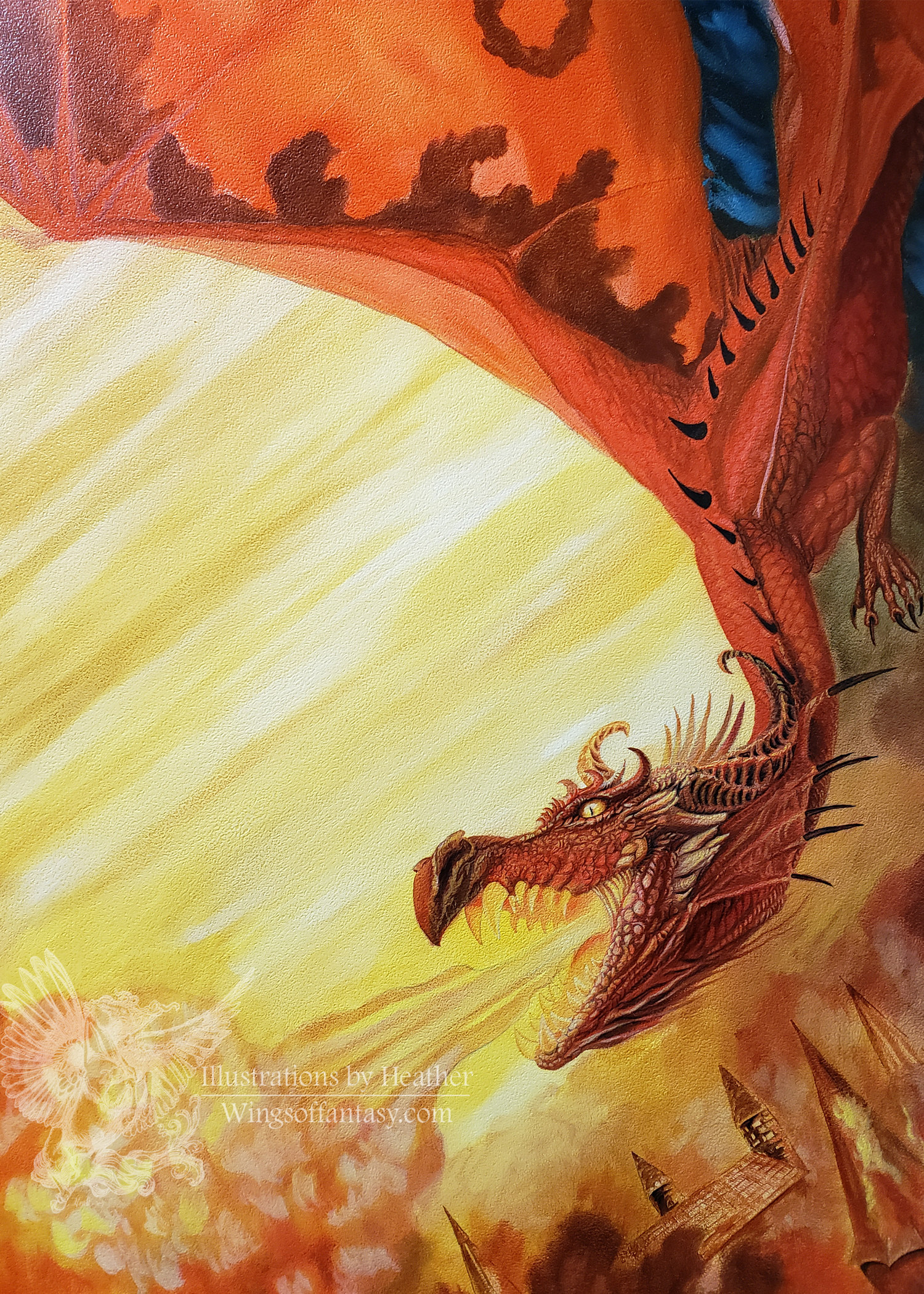The Horn Nosed Painted Dragon

I have to admit this is my first Oil painting at least since I was a kid. For years I relied on my colored pencils to achieve the colors I wanted in my illustrations, but always admired the beautiful paintings of some of my favorite artists. Artists like Boris Vallejo and Julie Bell with their beautifully rendered paintings of strong bodies in fantastical settings. Jeff Miracola and his unique pieces he creates for many entities such as Magic the Gathering, or Lisa Lachri at Lachri Fine Art with her beautiful wildlife and surreal settings. Thankfully all of these wonderful folks have shared a lot of their knowledge in the form of books or videos and trust me I poured over them. As many of their workshops I watched or read, I was still hesitant to dive into this new medium. The prices of the paint alone are enough to make your pocketbook run the other direction. Beyond the prices, what about all those solvents and such that increase the mystery of how it all works and whether it will last.
It wasn’t until I finished Misty Beginnings that I really decided it was time to paint rather than color. I literally had 136 hours of time in that drawing. I know this because I listen to audiobooks while I am painting. This is really the only time I get with a book. Once the realization hit me how long it was taking to complete these illustrations I decided to jump off that cliff into the world of liquid color and immerse myself in all its mystery. Starting with acrylic, because I had bought a set on sale and it had been sitting in a drawer for several months, I began my painting journey. My husband had bought me an airbrush at one point as well, and it was wonderful how fast a background could be put in with an airbrush and some brush strokes. A piece of white charcoal paper helped me transfer my image to the board (Jeff taught me I could gesso masonite and paint on it). My first acrylic piece, Launching of the Airships, went along quite nicely and done fairly quickly. It still took longer than I thought it would, but many hours shorter than a color pencil of the same size. The second piece, Bothersome Fairy, a doodle while sitting in my dealer’s booth at Radcon, went much quicker and even sold within a short time after completing it. Still not quite happy, I have now submerged my head in this liquidy color world and broke open the shiny new gamblin oil paint set I saw on sale one day. A friend of mine asked me to do a cover for his book coming out next year. He really liked my dragons and thought one would perfectly illustrate his new book. Why not do it in oil?
The first one I attempted did not go so well. I’m not sure where Jeff lives, but when he told me (yes I’m sure he’s speaking to me as there is no one else in the room) to brush linseed oil over the whole sky area to help the paint blend easier, I discovered real quick, my coastal community while cool, is probably too humid for that technique. I had to search all my references for another way to help this paint get moving, but dry in a reasonable amount of time. Luckily, Lisa had an answer, Liquin and later I found out M. Graham’s Walnut Alkyd medium will help your paints be dry to the touch in 24 hours if you work in thin layers like I do. If you are after non toxic or have allergies, the Walnut Alkyd Medium is supposed to be completely non toxic. Tested by another of my favorite artists in the fantasy illustration world, Justin Gerard and his wife Annie Stegg. Apparently the solvents and mediums make him turn into a werewolf at night and he goes off howling while the moon is full. So I have been following his journey of discovering non toxic solvents and mediums for his oil painting and it happily solves some of my problems of things not drying for days on end.
Painting in oil has certainly been all that I thought it would be, challenging just because it’s new to me, but quite enjoyable to see effects. The paints are creamy and definitely fun to apply. A little pricey getting started, but scouring the sales and using coupons at my local art store has certainly helped me get rolling fairly quickly. Turns out many of the brushes I used for acrylic, work with oil as well due to the type of bristle they have. I would definitely recommend checking with the manufacturer before you nosedive your acrylic brush into solvents, mediums, and oils. I also learned that if you leave your brushes too long and oil paint has found its way into the ferrule, let the brush soak in Murphy’s Oil overnight. Clean as you normally would a couple times and they’ll be good as new.